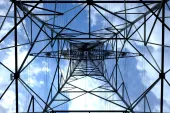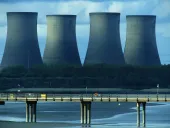
China's 12th Five-Year Plan calls for major capacity expansions despite downturn
By Matt FeinsteinEven though some Chinese solar suppliers – Suntech Power is a notable example – have frozen capacity expansions due to slow growth in demand, China is reportedly pushing its top solar companies to expand.
As per the 12th Five-Year Plan, the country wants key domestic polysilicon suppliers to expand annual capacity to 50,000 MT each, and module suppliers to 5 GW each, by 2015 – despite fairly slow demand growth and the increasing likelihood of tariffs applied to Chinese modules imported to the U.S. (and a potential for the same in Europe).
The goal of the Chinese plan is to increase its worldwide market share in solar – and to some degree, to tighten the belt on the already-slim remaining manufacturing industry in the U.S. and Europe. In addition to its growing domestic market, those Chinese suppliers will likely seek out India and other emerging markets as primary demand sinks.
When demand slows and inventory rises, the Chinese government will support those suppliers by buying modules at, or below, the cost of production. The strategy is not unique to solar, either; the same plan calls for similar action in an effort to commoditize membranes for water desalination, and increase Chinese market share accordingly.
In demand markets outside of India and China, expect to see a major rise in market share from Japanese suppliers – Panasonic, but also Solar Frontier.
In the west, European suppliers like REC, Q-Cells, and SolarWorld may also be in position to make a comeback – but need to overcome both current financial troubles and a declining European demand market.
In Germany, governmental authority to change feed-in tariff levels without parliamentary approval has been removed from a broader incentive revision law. This is a major win for the industry, in that the government would have otherwise been able to quickly, easily revise feed-in tariff levels based on recent installation numbers, and limit the price premium on power to ratepayers that funds the incentive.
In the new version of the law, planned incentive reductions would have their magnitude determined by the amount of solar installed. Based on the previous four quarters, if installations exceed 7.5 GW (Germany's installed total for 2011), incentive reductions are maximized at 29%.
If installations are between 2.5 GW and 3.5 GW – where the government would prefer them to be – incentives are cut by only 11.4%. The government projects installations in 2017 at between 900 MW and 1.9 GW.
In the world's new largest market – Italy, at 9 GW in 2011 – the government is taking a much more aggressive approach. A new solar program likely to be implemented mid-year would cap subsidized installations at 400 MW.
Further, if installations in H1 2012 exceed 2 GW, all H2 installations would be halted. Going forward, in addition to the 400 MW incentive cap, only systems under 3 kW would be allowed.
As Lux Research mentioned in the State of the Market Report, "Market Size Update 2012: The Push to a Post-Subsidy Solar Industry," European governments will find their backs against a wall, and continue to take major action to curtail installations – like those being taken in Italy.
Suppliers would be wise to begin planning for an industry beyond government incentives, and to expect a reality check in the form of a flat demand market in 2012. While Germany and Italy's total markets stand likely to decline gradually as opposed to instantly, the solar market is relying on Asian markets for broader growth.




















 Advertise
Advertise







